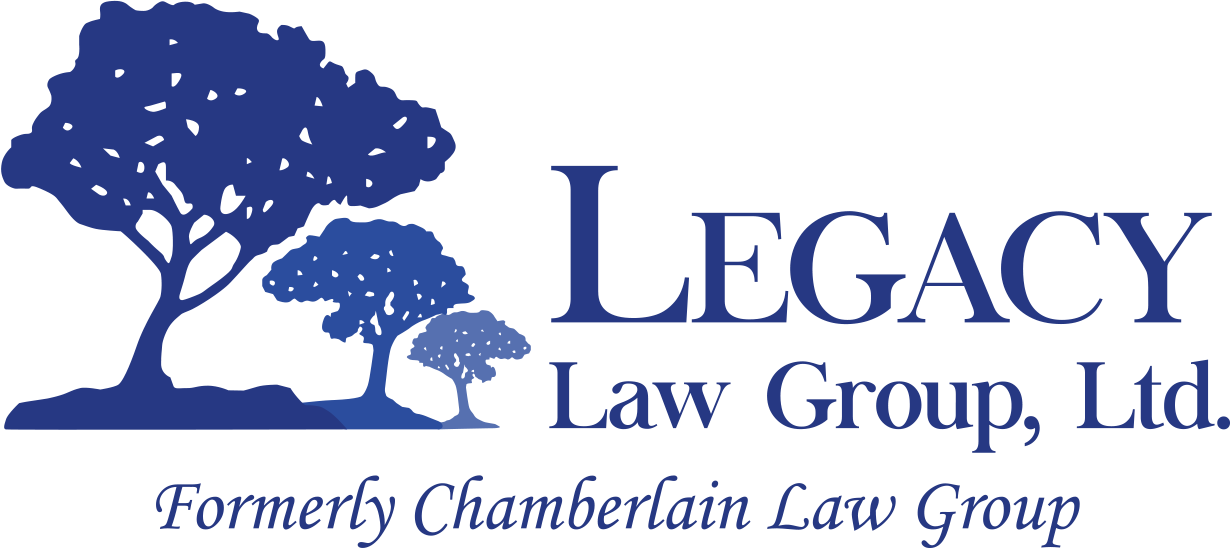
Dave Ramsey gets a lot of good things done, and he helps a lot of people with debt and getting their financial houses in order. He’s very knowledgeable about a lot of things relating to debt and finances, but he apparently doesn’t know a lot about living trusts.
I have a lot of respect for Dave Ramsey. I’ve read several of his books, have listened to his radio program, and have even facilitated his Financial Peace class at my church. Millions of people listen to Dave Ramsey, and most of the advice he gives is spot on and filled with common sense. In his recent book, The Legacy Journey: A Radical View of Biblical Wealth and Generosity (Ramsey, Dave. Brentwood: Ramsey Press, The Lampo Group, Inc., 2014. Print.), Dave presents a very unfavorable view of living trusts, and unfortunatelythat view is based on a complete misunderstanding of how living trusts are designed and what they are intended to do. Here’s what Dave has to say about living trusts (so as to not be accused of taking anything out of context, I’ll quote it in full):
One thing that’s becoming more popular in the world of estate planning lately is the living trust. Estate planners are pitching this pretty heavily inside the church too, but I’m not a fan of these arrangements at all. Here’s the deal. I never recommend something to someone that I wouldn’t use myself. And since a living trust makes no sense in almost any situation, I can’t recommend it to you either. I’m not mad at the living trust people, and I don’t think they’re ripping anyone off; I just don’t see any benefit to the hassle that a living trust creates. Unlike a standard will, living trusts require you to move your assets from under your own control to a trust before your death. As a result, even basic financial decisions – like adjusting investments, managing bank accounts, giving to charities, and buying or selling real estate – have to go through a trustee because the trust legally owns everything. While it’s true that larger estates require a higher level of sophistication, detail, and privacy in estate planning, a living trust probably isn’t the answer in the vast majority of cases. It definitely wasn’t in mine. More times than not, people in Baby Step 7 who are living and generously giving like no one else can protect their legacies through an estate plan built around a carefully designed will. And if it’s a large estate, there will most likely be several trusts put in place upon death.
Despite how often the financial world pitches living trusts, there are three main problems that are hard to ignore. First, living trusts are the primary upsell in the estate-planning world. Rather than simplifying matters, living trusts create an expensive and usually unnecessary add-on to estate planning. They also require an ongoing relationship with an estate planner because you need a representative every time you want to adjust your assets.
Second, most living trusts are never fully funded. Setting up a trust is usually an expensive process, but the estate planners I’ve talked to say most of their clients never actually fully fund the living trust after setting it up. The hassle of retitling and redeeding everything into the name of the trust is so complicated and frustrating that only the nerdiest of the Nerds tend to follow through. But an unfunded trust isn’t really a trust at all; it’s just a waste of money that provides no benefit to you or your loved ones.
Third, living trusts create a cumbersome problem every time you want to do something with your investments or property. In a living trust you don’t personally own anything – the trust does. That means you can’t make a move without getting the legal approval of the trustee. For example, I buy and sell real estate, review my mutual funds, and set up new investments all the time. If I had everything in a living trust, I’d have to move my estate planner and the trustee into an office next door just to handle the day-to-day operations of my estate! I just haven’t seen any benefit to outweigh these issues, so I stay away from living trusts.
The Legacy Journey, pages 153 – 155.
Now don’t get me wrong. I’m not saying that I disagree with Dave’s opinions. I’m saying that Dave’s opinions on living trusts are based on faulty facts and an apparent misunderstanding of how most living trusts have been set up for at least the past 25 years. Let’s take the most egregious of them in turn.
“Unlike a standard will, living trusts require you to move your assets from under your own control to a trust before your death. As a result, even basic financial decisions – like adjusting investments, managing bank accounts, giving to charities, and buying or selling real estate – have to go through a trustee because the trust legally owns everything.”
This is partly true, in that a living trust arrangement does require you to move your assets (generally everything excluding retirement accounts, annuities and life insurance) into your trust before your death, and that the Trustee of the trust controls everything in the trust. However, it overlooks the fact that in almost every living trust created these days, the person creating the trust (the “Trustmaker”) names themselves as their own initial Trustee. This means that they never lose control of their assets, because they are simply giving their assets from themselves as individuals to themselves as the Trustee of the trust. They are able to do anything they want with their assets without the permission of any other person.
“They also require an ongoing relationship with an estate planner because you need a representative every time you want to adjust your assets.”
This statement is untrue, not only for the reasons stated above (the Trustmaker is the Trustee and can do anything they want with their assets without anyone else’s permission), but also for the fact that the trust document itself does not have a listing of the assets owned by the trust. For example, the trust agreement does not state anywhere that the trust is the owner of account 12345 at XYZ Bank, so if that account is closed and a new account is opened, there is no need to make any adjustment to the trust itself. The only exception would be if a person wanted to specifically leave an asset to a person in their trust (a piece of real estate, for example). In that case, if that real estate was sold and new property was purchased instead, the trust would have to be adjusted. Of course, the same adjustment would be required for a similar gift in a Will, as well.
“Second, most living trusts are never fully funded.”
This statement, unfortunately, can be true in many cases. Over the years I have seen way too many unfunded living trusts prepared by other attorneys. It is for this exact reason that we offer funding services for our clients. While I would disagree with Dave that funding is “so complicated and frustrating,” I would agree that most people have other important things to do with their lives, and funding their trust often gets pushed down their priority list. A lot of our clients prefer to have us help them with their funding so that they can know it is done, and done correctly.
“Third, living trusts create a cumbersome problem every time you want to do something with your investments or property…. If I had everything in a living trust, I’d have to move my estate planner and the trustee into an office next door just to handle the day-to-day operations of my estate!”
Once again, this is a misunderstanding of how most living trusts are created, with the Trustmaker serving as the initial Trustee and being in control of all of the assets in the trust. It’s not necessary to call the lawyer every time an asset is changed, and it’s certainly not necessary to call the Trustee for permission (you are the Trustee).
Dave’s conclusion is that he hasn’t seen any benefit to outweigh the issues he sees with living trusts, so he stays away from them. As I’ve pointed out, the issues Dave has with living trusts are inaccurate. In addition, there are numerous benefits to having a living trust, as we have written about many times over the years.






About The Author: Richard Chamberlain
More posts by Richard Chamberlain